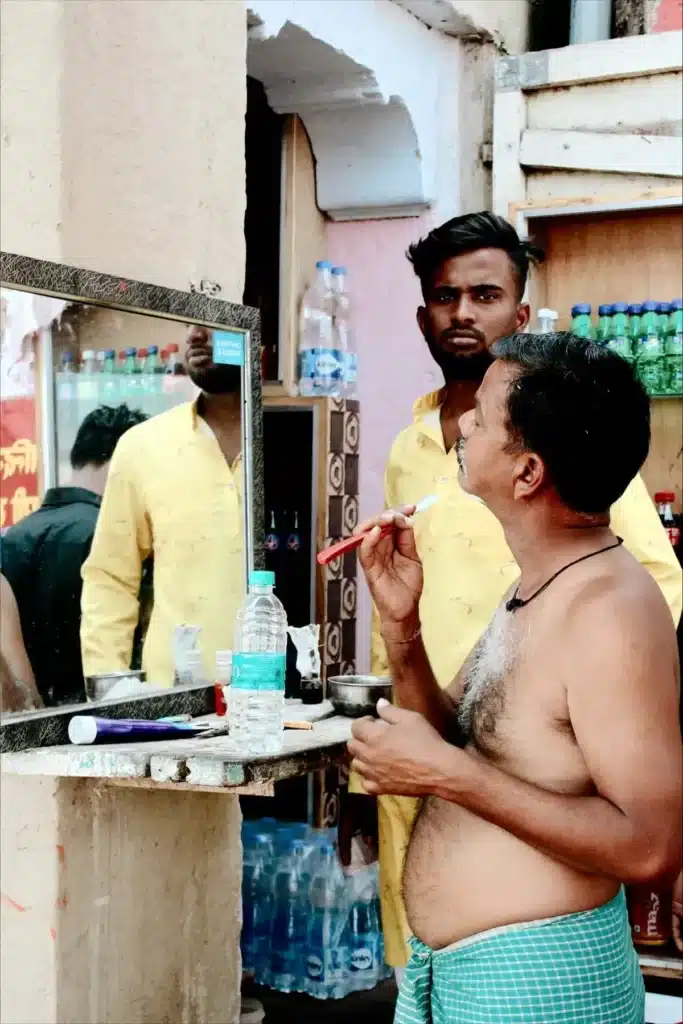
Cannabis in India has been used since 2000 BC, but currently all forms of cannabis are illegal, with some subsidies for some traditional preparations or clothing manufacture.
It is an ancient plant and has been used for thousands of years by tribes of different religions, including Hinduism, the largest religion in India and also one of the most ancient religions in the world. According to the Vedas, sacred Hindu texts, cannabis is one of the 5 sacred plants and one of the sources of happiness. It is proven that you must send the cannon by company to the human race to obtain prayer and that Shiva used the Charas in his meditations on the mountain.
Besides that, it has also been used in healthcare by thousands of years and specially in the Ayurvedic medicine, the most traditional in Índia, where more than 250 formulations are based on the plant.
Although it is illegal, the consumption and cultivation of the plant in India is socially accepted, something similar to Morocco. In any case, it is not recommended to carry or consume in public when there is a possibility of police presence, since the police in India can be very corrupt.
Each state in Índia have different regulations regarding the matter. The state of Uttarakhand was the first in the country to legalize hemp cultivation, in 2016. As long as the levels of the THC is low, it is allowed. It is mainly used for the production of fiber, seeds (identified as a food source) and hempcrete (canham concrete).
The village of Malana, known worldwide for the Malana Cream, a type of charas that has won 2 Cannabis Cups, suffers with the prohibitions, once the cultivation and production of hash is the main source of income in the region. This is due to the adverse conditions such as the harsh climate, making cannabis one of the only plants that yield color. In this way, the local police are tolerant of plant-related practices, but people are still threatened with criminalization, since legalization has not been adopted. All types of family relationship are a big thing in India, as well as higher education. As a result, some families may also be extremely against the use of cannabis, as it is a country that has recently suffered from poverty and where the type of work you do has a great importance, because of each cast they represent and for the comfort they can provide.
Therefore, it is still common to see people using bhang on religious commemorative dates, as well as chillum. Because it is intrinsic to religion, cannabis has a particular place in Indian culture, since it is believed that Shiva consecrated the plant.
The charas is a type of extraction and it was the first to have been produced in the world. The technique for it’s production was developed in India, where it’s consumption is common and has a very interesting history due to legends that became sacred to some cultures.
The production of the charas is 100% artisanal and your hand is everything you will need to make it. Differently from other types of hash, it is produced with a living plant which will definitely potentiates the levels of THC. The flowers are harvested before full maturation and, traditionally, they are made with local plants adapted to the climate of the region (northern India).
It is usually dark brown on the outside and brown or dark green on the inside. The most famous one is the already mentioned Malana Cream, the best on the region of the Indian Himalayas.
Commonly, in the traditional way, it is smoked in a chillum – a type of hookah often used by sadhus. It’s a cone usually made of ceramic, which must be smoked in a vertical position and raised to the head in the form of a treat to god Shiva. This form of consumption of charas is considered a ritual and is frequently shared by a group. According to Hindu mythology, charas represents the mind, chillum the body of Shiva, one of the main Hindu gods, and the smoke, represents the sacred influence of the gods.
There have been ancient rumors that Shiva himself consumed cannabis through bhang, a drink made out of a plant paste pressed with a specific type of stone. Many use it as a way to approach the divine, mainly on big celebrations such as the Maha Shivaratri and the Holi Festival. It is usually mixed with water or lassi, a type of yogurt-like drink very common in India. As all edibles, specially the non properly dosed ones, it can be pretty strong and not always the best experience if you’re not used to it.
Traveling in India has held amazing learnings but to realize how sacred the cannabis is, for sure was one of the best ones. It’s amazing to know how intrinsic it is both in the culture and in the religion. But the best part, for sure, was smoking a chillum with the babas (meaning “dad”, they’re basically wise man or gurus) and hearing all these hindu stories about the gods.


Girls Seeds declara expresamente que no desea inducir a nadie a actuar en conflicto con la ley. Todas las personas que compren semillas de cannabis son responsables de sus acciones y futuras acciones. Girls Seeds no aceptará ninguna responsabilidad a este respecto. Toda la información en el sitio web es únicamente para fines educativos y no está destinada a condonar, promover o incitar el cultivo de sustancias ilegales y/o controladas.